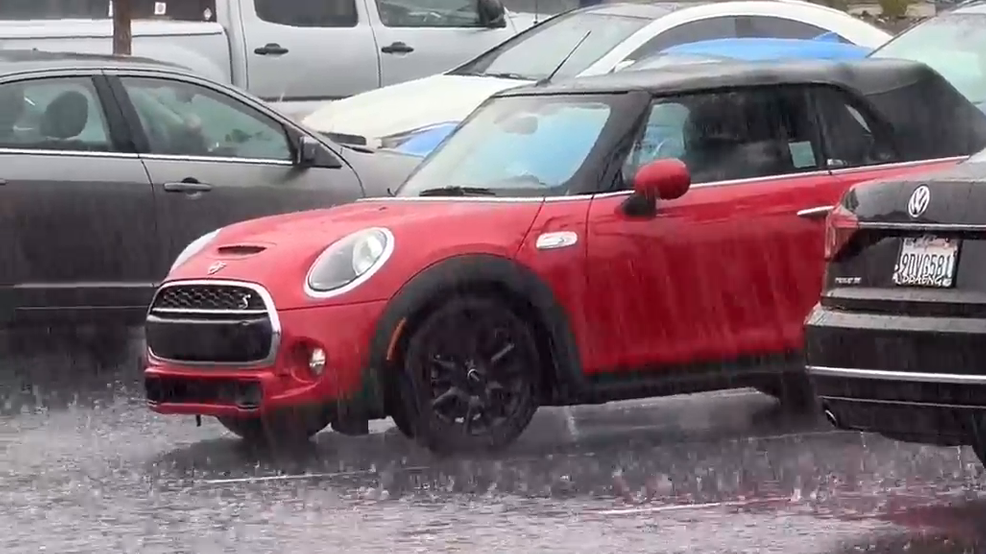High Winds With Fast-Moving Storms: Preparation And Safety

Table of Contents
Understanding the Risks of High Winds and Fast-Moving Storms
High winds, whether associated with thunderstorms, hurricanes, tornadoes, or derechoes, represent a significant danger. Understanding the types of storms and their potential hazards is the first step in effective preparation.
Types of Storms
Several types of storms can bring high winds and pose significant threats. These include:
- Thunderstorms: These storms can produce sudden, intense gusts of wind, heavy rain, and even hail. Severe thunderstorms, often called supercells, are especially dangerous due to their powerful downdrafts and potential for tornadoes.
- Hurricanes: These massive storms bring sustained high winds, torrential rain, and storm surges. The wind speeds in hurricanes can be devastating, causing widespread destruction. Examples like Hurricane Katrina highlight the catastrophic impact of high winds associated with hurricanes.
- Tornadoes: These violently rotating columns of air are characterized by extremely high wind speeds and are capable of causing catastrophic damage in a very short period. The Fujita scale measures the intensity of tornadoes based on wind speed and damage.
- Derechoes: These widespread, long-lived wind storms are characterized by damaging straight-line winds that extend for hundreds of miles. Their widespread nature can cause significant damage across large areas.
Potential Hazards
High winds associated with these storms present numerous dangers:
- Flying debris: Strong winds can turn loose objects into dangerous projectiles. Flying debris, such as signs, tree branches, and even building materials, can cause serious injury or death.
- Power outages: High winds frequently knock down power lines, leading to widespread power outages. These outages can disrupt essential services like communication, refrigeration, and heating/cooling.
- Downed trees: The force of high winds can uproot trees, causing significant damage to property and blocking roads. Downed trees also pose a danger to people and vehicles.
- Structural damage: High winds can damage or even destroy buildings, causing roofs to collapse, windows to shatter, and walls to buckle. This structural damage can render buildings uninhabitable.
Assessing Your Risk
Your personal risk from high winds and fast-moving storms depends on several factors:
- Location: Areas prone to hurricanes, tornadoes, or other severe weather events are at higher risk. Coastal regions are especially vulnerable to hurricane-force winds.
- Type of housing: Older homes or those with weak structures are more susceptible to wind damage than newer, more robust constructions.
- Proximity to trees: Large trees near your home can increase the risk of damage from falling branches or uprooted trees.
Regularly check your local National Weather Service (NWS) website or app for weather alerts and warnings specific to your area. Being aware of impending storms is crucial for effective preparation and safety.
Preparing for High Winds and Fast-Moving Storms
Preparation is key to minimizing risk during high winds and fast-moving storms. A well-defined plan, home security measures, and vehicle preparedness are crucial components.
Creating a Family Emergency Plan
A comprehensive family emergency plan is vital. This plan should include:
- Communication plan: Establish multiple ways to communicate with family members during and after the storm (cell phones, landlines, email, social media).
- Evacuation routes: Identify multiple evacuation routes and a designated meeting place outside the home, considering potential road closures.
- Emergency kit: Prepare a kit containing essential supplies such as water, non-perishable food, first-aid supplies, flashlights, batteries, medications, and important documents.
- Pet preparedness: If you have pets, develop a plan for their evacuation and safety.
Securing Your Home
Before a storm hits, take steps to protect your property:
- Trim trees: Trim or remove branches that are close to your house or power lines.
- Secure loose objects: Bring loose items indoors, such as patio furniture, trash cans, and decorations.
- Board windows: Board up windows or cover them with storm shutters to prevent damage from flying debris.
- Reinforce garage doors: Garage doors are vulnerable to high winds; reinforce them or close them securely.
Protecting Your Vehicle
Park your vehicles in a safe location, away from trees, power lines, and potential flood zones. Consider bringing vehicles into a garage if possible.
Staying Safe During High Winds and Fast-Moving Storms
During a high wind or fast-moving storm, your safety is paramount.
Staying Indoors
If a storm warning is issued, stay indoors in a sturdy interior room, away from windows and doors. If you lose power:
- Stay away from downed power lines.
- Use flashlights instead of candles to prevent fire hazards.
- Keep warm or cool according to the weather conditions.
If Caught Outdoors
If you are caught outdoors during a high-wind event:
- Seek immediate shelter in a sturdy building.
- Avoid trees, power lines, and floodwaters.
- Stay low to the ground if there's no other shelter available.
After the Storm
After the storm has passed:
- Check for damage to your home and property.
- Report downed power lines to your utility company.
- Exercise caution when navigating debris and floodwaters.
- Be aware of potential hazards like weakened structures and unstable debris.
Conclusion
High winds and fast-moving storms present significant dangers. By understanding the risks, preparing adequately, and taking necessary precautions during and after a storm, you can significantly reduce the potential for harm. Remember to create a comprehensive family emergency plan, secure your home and property, and stay informed about weather alerts. Being prepared for high winds and fast-moving storms can save lives and minimize property damage. Don't delay; start preparing for high winds and fast-moving storms today!

Featured Posts
-
 Renforcement De La Cooperation Bilaterale Visite Du President Mahama A Abidjan
May 20, 2025
Renforcement De La Cooperation Bilaterale Visite Du President Mahama A Abidjan
May 20, 2025 -
 Mild Temperatures Low Chance Of Rain Weather Outlook
May 20, 2025
Mild Temperatures Low Chance Of Rain Weather Outlook
May 20, 2025 -
 Aryna Sabalenka Dominates Mertens Advances To Madrid Open Round Of 16
May 20, 2025
Aryna Sabalenka Dominates Mertens Advances To Madrid Open Round Of 16
May 20, 2025 -
 Tadic Fenerbahce Ye Geliyor Kuluep Tarihinin En Bueyuek Transferlerinden Biri
May 20, 2025
Tadic Fenerbahce Ye Geliyor Kuluep Tarihinin En Bueyuek Transferlerinden Biri
May 20, 2025 -
 4eme Pont D Abidjan Delais Cout Et Depenses Un Decryptage Complet
May 20, 2025
4eme Pont D Abidjan Delais Cout Et Depenses Un Decryptage Complet
May 20, 2025
